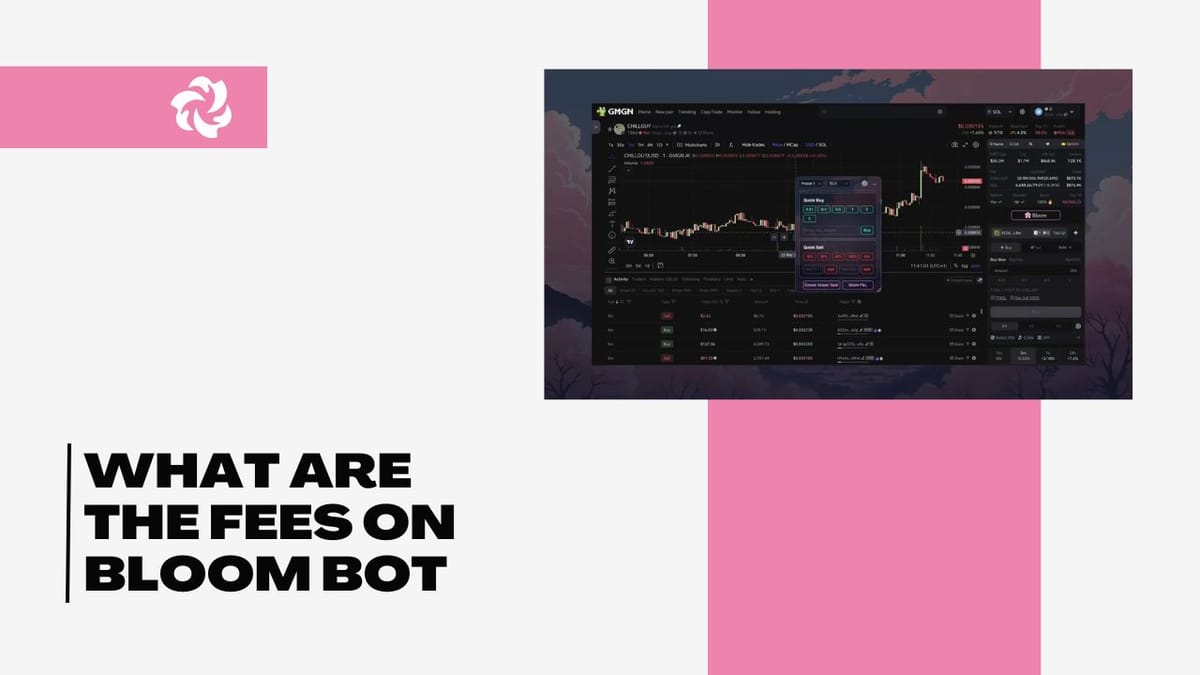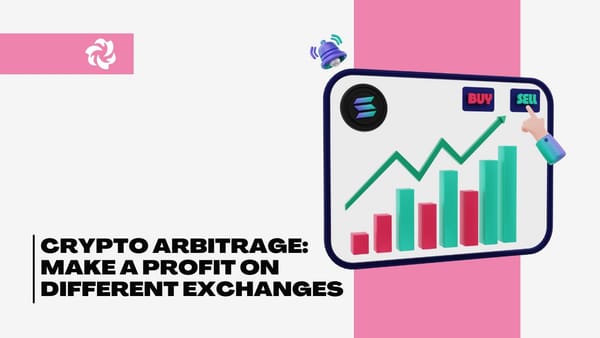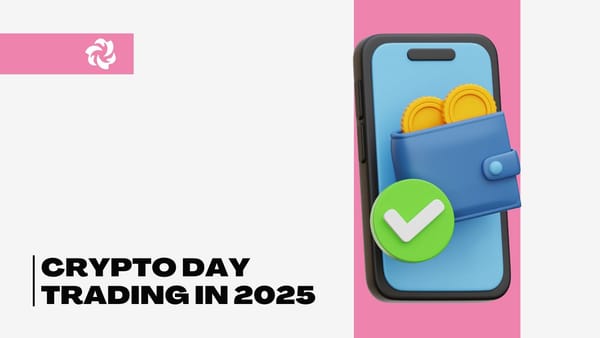How to Get Rich With Trading Bots

Thinking about using crypto trading bots to make some quick cash? Lots of ads promise easy money while you sleep, but is it really that simple? We'll break down what these bots actually do, whether they can actually make you rich, and if they're even worth the hassle. We'll also touch on things like using a telegram trading bot and what to watch out for.
Key Takeaways
- Crypto trading bots are automated programs that execute trades based on pre-set rules and market data.
- Profitability depends heavily on market conditions, the bot's strategy, and how well it's managed.
- Legitimate bots are transparent about their operations and risks, unlike scams that promise guaranteed profits.
- Bots can save time but require ongoing monitoring and may involve costs and technical setup.
- Using a telegram trading bot can simplify interaction and management, but risks like technical failures and over-optimization still exist.
Understanding Crypto Trading Bots

So, what exactly are these crypto trading bots everyone's talking about? Simply put, they're computer programs designed to automate the buying and selling of digital currencies. Instead of you staring at charts all day, a bot does the heavy lifting. It uses algorithms, which are basically sets of rules, to analyze market data like prices, trading volumes, and even the time of day. Based on this analysis, it decides when to make a trade – buying low and selling high, or vice versa. It's like having a tireless digital assistant for your crypto investments.
What Are Crypto Trading Bots?
At their core, crypto trading bots are automated software. They connect to cryptocurrency exchanges, using your API keys to execute trades based on pre-programmed strategies. Think of them as digital agents that can monitor market fluctuations 24/7 and react much faster than a human possibly could. They're built to execute specific trading plans without emotional interference, which can be a big advantage in the often-frenetic crypto markets. A crypto trading bot can be programmed for various goals, from simple price tracking to complex arbitrage strategies.
Types of Trading Bots Explained
There isn't just one kind of trading bot; they come in several flavors, each suited for different market approaches:
- Market-Making Bots: These bots aim to profit from the difference between the highest price a buyer is willing to pay (the bid) and the lowest price a seller is willing to accept (the ask). They constantly place buy and sell orders, trying to capture this spread. They often benefit from trading fee rebates offered by exchanges.
- Arbitrage Bots: These are designed to exploit tiny price differences for the same asset across different exchanges. For example, if Bitcoin is trading at $30,000 on Exchange A and $30,050 on Exchange B, an arbitrage bot would quickly buy on A and sell on B to pocket the $50 difference, minus fees.
- Trend-Following Bots: These bots try to identify and capitalize on market trends. If the market is going up, they'll buy and hold until the trend shows signs of weakening. Conversely, if the market is trending down, they might sell or even short the asset. They rely heavily on technical indicators to spot these trends.
- News-Based Bots: Some bots are programmed to react to news events or social media sentiment. They might buy an asset when positive news breaks or sell when negative sentiment appears, trying to get ahead of the market's reaction.
It's important to remember that while bots automate trading, they don't guarantee profits. Their success hinges entirely on the quality of their programming and the market conditions they operate within. A poorly designed bot, or one used in the wrong market environment, can just as easily lose money as make it.
The Profitability Puzzle
So, can these trading bots actually make you rich? It’s a question many people ask, and the honest answer is… it’s complicated. It’s not as simple as just plugging in a bot and watching the money roll in. There are a lot of moving parts, and what works for one person might not work for another. It really comes down to a few key things.
Factors Influencing Profitability
Several things can really impact whether your bot is making money or losing it. Think of it like driving a car – you need the right fuel, a good engine, and a clear road. For bots, it’s similar:
- Market Conditions: Is the market going up, down, or just sideways? A bot designed to catch upward trends might do great when prices are climbing but could struggle if the market is flat or dropping fast. High volatility can be good for quick profits, but it also means bigger risks.
- Strategy: The actual plan the bot follows is super important. A bot that’s good at spotting small price differences between exchanges (arbitrage) won’t do well if those differences disappear. You need a strategy that fits the current market.
- User Expertise: Knowing how to set up the bot, tweak its settings, and keep an eye on it is key. If you don’t understand the trading logic or how to manage risk, you might make mistakes that cost you money. It’s not just about the bot; it’s about how you use it.
Market Conditions and Strategy Impact
Let’s dig a bit deeper into how the market and the bot’s strategy interact. Imagine you have a bot that’s programmed to buy when a price goes up by 2% and sell when it drops by 1%. This might work well in a choppy market where prices bounce around a bit. However, if there’s a strong, steady upward trend, the bot might keep selling too early, missing out on bigger gains. Conversely, in a sharp downturn, it might keep buying, thinking it’s a dip, only to see prices fall further.
The most profitable strategies are often the ones that are constantly being updated and adapted. What worked last month might not work today. It’s a constant game of staying ahead, and that’s tough for individual traders to do without serious resources.
It’s also worth noting that if a trading strategy becomes widely known, its effectiveness usually drops. Think about it: if everyone is using the same method to profit from a small price difference on two exchanges, that difference will quickly disappear as everyone tries to grab it. This is why many successful trading firms keep their exact methods secret. Trying to copy a strategy that’s already public might mean you’re too late to make significant profits. For those looking to understand how bots perform, looking at AI trading bot performance can offer some insights, though real-world results vary greatly.
Navigating the Legitimacy Landscape
It’s easy to get excited about the idea of automated crypto trading, but not all bots are created equal. Some are genuinely helpful tools, while others are just scams looking to take your money. So, how do you tell the difference? It’s important to do your homework before you hand over any cash or connect your exchange account.
Legitimacy Factors to Consider
When you’re looking at a trading bot, check if the provider is upfront about how it works. Do they explain the strategies involved and the risks? A bot that just promises massive profits with no details is a big red flag. Look for bots that offer clear documentation and have a good reputation based on user reviews. A bot that operates independently and doesn't seem to just inflate trading volumes on exchanges is also a better sign. Transparency and a clear explanation of functionality are key indicators of a legitimate service.
Identifying Scams and Red Flags
Be wary of any bot that guarantees profits. In the volatile world of crypto, no one can promise you'll always make money. Other warning signs include:
- Unrealistic Promises: Claims of guaranteed high returns with little to no risk.
- Lack of Transparency: Vague explanations of how the bot operates or what strategies it uses.
- Pressure Tactics: Being pushed to invest quickly without time for research.
- Poor Reviews or No Reviews: A lack of verifiable positive feedback from actual users.
- Requests for Sensitive Information: Asking for your private keys or excessive personal data beyond what's needed for API access.
If a bot seems too good to be true, it probably is. It’s always better to be cautious and stick with providers that are open about their processes and potential downsides. Remember, a good crypto trading bot should help you manage risk, not promise to eliminate it entirely.
The crypto market is unpredictable. While bots can automate strategies, they can't predict the future. Always approach automated trading with realistic expectations and a solid understanding of the risks involved.
Are Trading Bots Worth Your Time?
So, are these trading bots actually worth your time and effort? It’s a question many people ask, and the answer isn't a simple yes or no. It really depends on what you're looking for and what you're willing to put in.
Time Savings vs. Active Management
Bots can definitely save you time. They can monitor the market 24/7, which is something most of us can't do. Imagine sleeping through a big price move – a bot could potentially catch that. However, they aren't exactly 'set it and forget it' tools. You still need to check in, adjust settings, and make sure everything is running smoothly. It’s more like having an assistant than a fully automated system. You're trading your active watching time for time spent on setup and oversight.
Considering Costs and Technical Skills
Then there are the costs. Some bots require an upfront purchase, while others have monthly fees. You've got to make sure these expenses don't eat up any profits you might make. Plus, there's the technical side. If you're comfortable tinkering with settings, understanding different trading strategies, and figuring out why something might not be working, you'll probably get more out of a bot. If that sounds like a headache, it might not be the best fit for you.
Think of it like buying a fancy coffee machine. It can make great coffee, but you still need to buy beans, grind them, clean the machine, and learn how to use it properly. It's not magic, it's a tool that requires some involvement.
The Telegram Trading Bot Advantage

How Telegram Bots Streamline Trading
So, you're looking at crypto trading bots and wondering how to make things simpler. That's where Telegram bots come into play. Think of Telegram as a chat app, but with these bots, it becomes a control center for your trading. They can send you real-time alerts about price changes, news that might affect your trades, or even notify you when your bot makes a move. This means you don't have to constantly stare at your screen. It’s like having a personal assistant for your crypto portfolio, right in your pocket. They can also execute simple commands, like checking your bot's performance or adjusting a setting, all through a chat interface. It really cuts down on the complexity of managing multiple platforms and complex software.
Here's a quick look at what they offer:
- Instant Notifications: Get alerts for price movements, trade executions, or specific market events.
- Command Execution: Send simple commands to your trading bot without logging into a separate dashboard.
- Market Overview: Receive summaries of your portfolio's performance or key market indicators.
- Ease of Access: Manage your trading activities directly from your smartphone or computer via the Telegram app.
The convenience of having trading updates and basic controls delivered through a familiar messaging app can significantly reduce the friction involved in automated trading. It makes staying informed and making minor adjustments much more accessible, especially for those who aren't glued to their trading dashboards all day.
Leveraging Telegram for Bot Integration
Integrating your trading bot with Telegram is often more straightforward than you might think. Many popular trading bot platforms offer built-in support for Telegram notifications. This usually involves a simple setup process where you link your Telegram account to your bot. You'll typically need to get a unique API token from Telegram and input it into your bot's settings. Once connected, you can customize the types of alerts you want to receive. For instance, you might want notifications only when a trade hits a certain profit target or when the market experiences a significant drop. This targeted approach helps avoid notification overload. Many users find that using Telegram crypto trading bots provides a more immediate and interactive way to stay on top of their automated trading strategies.
It's important to remember that while Telegram bots simplify communication, they don't replace the core functionality of your trading bot. They act as an interface and notification system, enhancing your ability to monitor and interact with your bot's operations. The actual trading logic and execution still happen on the bot's server or your own machine, depending on the bot's architecture.
Realities of Automated Trading
So, you've heard about trading bots and how they can supposedly make you rich. It sounds great, right? Let the bot do all the work while you sip margaritas on the beach. But, like most things that sound too good to be true, there's a bit more to it. Automated trading isn't some magic money printer, and understanding the actual challenges is pretty important before you jump in.
Technical Failures and Over-Optimization
Bots are software, and software can glitch. Think about it: your bot might be running on your computer, or a server somewhere. What happens if the internet goes out? Or the server crashes? Or there's a power outage? These aren't rare events, and they can mean your bot stops trading, potentially missing out on opportunities or, worse, getting stuck in a bad trade. Then there's the issue of over-optimization. This is when a bot's strategy is tweaked so much to fit past market data that it becomes brittle. It might have worked perfectly in backtests, but the moment the market shifts even slightly, it falls apart. It’s like tuning a car engine so perfectly for one specific race track that it runs terribly everywhere else.
Legal and Compliance Challenges
This is a big one that many people overlook. The world of crypto is still pretty new, and regulations are constantly changing. Different countries have different rules about trading, taxes, and even using automated software. You need to make sure whatever bot you're using, and however you're using it, complies with the laws where you live and where the exchange you're trading on operates. Messing this up can lead to serious trouble, like frozen funds or even legal penalties. For instance, many exchanges have strict know-your-customer (KYC) rules, and if your bot setup doesn't align with that, you could face issues. It’s not just about the bot itself, but how you integrate it into the regulated financial system. Staying on the right side of the law is non-negotiable.
The Speed Disadvantage
In the fast-paced world of crypto trading, speed is king. Big trading firms have massive resources. They can afford super-fast servers located right next to the exchange's own servers, cutting down the time it takes to place a trade to mere milliseconds. For an individual trader, running a bot from home on a standard internet connection, by the time your bot even sees a price difference or a trading signal, that opportunity might have already vanished. It’s like trying to win a Formula 1 race with a bicycle – you’re just not equipped to compete at that level. This speed gap is a major reason why many retail traders struggle to profit from strategies that high-frequency trading firms exploit.
Psychological Hurdles for Solo Traders
Even if you get the tech and legal stuff sorted, there's still your own brain to deal with. Bots are supposed to remove emotion from trading, but you are still the one setting them up and deciding when to run them. It’s easy to get attached to a strategy, even when it’s not working. You might see your bot losing money and be tempted to tweak it impulsively, or maybe you’ll override it because you feel like the market is about to do something different. This is where the human element can sabotage even the best automated systems. Without a team to question your decisions or a risk manager to step in, it’s much harder to maintain discipline. Remember, even the biggest trading outfits invest heavily in behavioral economics to keep their traders in check.
The Reality of Scale and Resources
Let's be blunt: the big players in crypto trading have advantages you likely don't. They have teams of experts – programmers, quantitative analysts, traders – all working together. They have huge amounts of capital to deploy across many different strategies simultaneously, and they can afford to absorb losses while they refine their bots. As an individual, you're usually a one-person show. You have limited time, limited expertise, and limited capital. Trying to compete with institutions that have millions or billions to invest and teams of specialists is an uphill battle. They can run dozens of strategies at once, have backup systems for everything, and absorb market shocks that would wipe out a smaller operation. It's a business of economies of scale, and it's tough for individuals to match that.
So, Should You Try Trading Bots?
Look, making a fortune with trading bots isn't impossible, but it's definitely not a walk in the park either. It's not like you just flip a switch and money starts rolling in. You've got to understand the markets, know your tech, and be ready for things to go wrong sometimes. For most of us, it’s probably more realistic to keep our day jobs and maybe dabble with bots on the side, with money we can afford to lose. Don't expect to get rich overnight, and always be wary of anyone promising you the moon. It's a tool, and like any tool, it works best when you know what you're doing.
Frequently Asked Questions
What exactly are crypto trading bots?
Crypto trading bots are computer programs that automatically buy and sell digital money, like Bitcoin or Ethereum. They use special instructions, called algorithms, to watch market prices and make trades when certain conditions are met, all without you needing to stare at your screen all day.
How do these bots actually make money?
Some bots are designed to make money by spotting tiny price differences for the same coin on different exchanges and quickly trading between them. Others try to follow market trends, buying when prices are going up and selling when they start to drop.
What makes a crypto trading bot profitable or not?
Whether a bot makes money depends on a few things. The market's ups and downs play a big role – a fast-moving market can mean quick profits or big losses. Also, the bot's strategy needs to match what the market is doing. A strategy that works well in a rising market might not do so hot when prices are flat.
How can I tell if a crypto trading bot is trustworthy and not a scam?
You should be wary of bots that promise guaranteed profits, as no trading strategy is foolproof. If a bot's creators are secretive about how it works or the risks involved, that's a big red flag. Always check reviews and stick with well-known, transparent providers.
Are trading bots worth the effort compared to trading myself?
Bots can save you time by watching the market 24/7, but they aren't a 'set it and forget it' solution. You still need to check on them and adjust settings. Also, consider the cost of the bot itself and if you have the tech skills to manage it properly.
Is it really possible for an average person to get rich with crypto trading bots?
Yes, but it's not easy. Big trading companies with lots of resources and experts do make money. For individuals, it's tough because markets change fast, bots can have technical problems, and you need to understand complex strategies. Starting small and learning a lot is key.
Check Bloom Bot latest guides:














